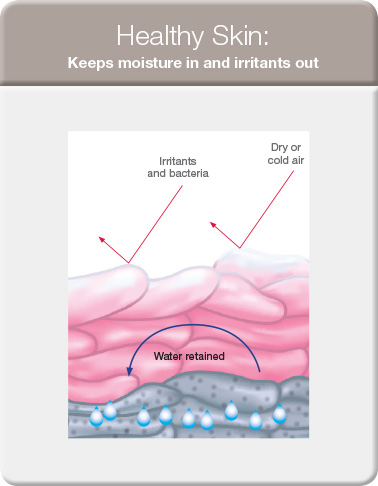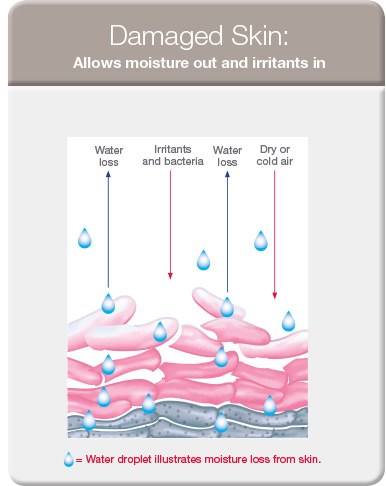Better Living With Barriers
Why the skin barrier in your pouching system is so important.

Find the right combination of fit and formulation.
Selecting the right ostomy skin barrier is one of the most important elements of a successful pouching system. The good news is you don’t have to go this alone. This is a collaborative journey between you and your health care team.
The barrier is designed to stick to your abdomen in order to keep your pouching system in place, and to protect the skin from stoma output. Keeping the skin around your stoma (called peristomal skin) healthy and free of rashes or irritation is essential for feeling your best.
Designed to fit.
Putting together the right pouching system can be a bit like solving a puzzle. Different body types and the size and shape of the stoma are factors to consider. Perhaps your stoma protrudes well and you require a flat barrier. Or a convex barrier may be better if your stoma is more flush with the skin. Your WOC nurse or health care provider will help you find what works best for you and your skin.
Keeping peristomal skin healthy has an impact on fit as well. If the skin around your stoma becomes damaged, it can become difficult for the barrier to adhere as well as it should. This makes a leak more likely, and a dangerous cycle of skin damage can result, and become worse over time. Without the security you need, you may need to change your barrier more frequently which can also be stressful to your skin.


Formulated to protect.
When considering barrier options, formulation is equally important to fit. The customized ingredients that make up your barrier are responsible for providing the “stickiness” that creates a tight seal between the barrier and your skin. The formulation is also responsible for the absorbent qualities needed to handle moisture without breaking down.
The formulation must be strong enough to maintain its hold for an extended period of time, yet be gentle enough to help minimize skin damage that happens naturally with repeated or routine removal of the barrier.
Some barriers, called infused skin barriers, include an additional ingredient, such as ceramide, to help support skin health. Ceramides serve as the skin’s natural protection against moisture loss. By binding skin cells together on the outermost layer of your skin, ceramides help create a waterproof protective barrier to help keep skin healthy. Ceramides also help to maintain the skin’s moisture and minimize dryness, which helps your skin maintain its resistance to injury over time.
On and off again.
Each time you remove your ostomy barrier, the cells on the top layer of your skin can also be peeled away. Losing part of this protective layer can make skin more vulnerable to damage and allow more moisture from inside your body to escape. This is called transepidermal water loss, or TEWL. While some moisture loss is to be expected, you may lose it at a higher rate if skin is irritated or dry. Dryness is also considered to be a common cause of itching.


In a recent study comparing the effects of different skin barriers on the abdomen, the ceramide-infused CeraPlus™ skin barrier was observed to provide better protection against the damaging effects of repeated adhesive removal.*
Having the right ostomy barrier in place can make a real difference in your skin’s ability to retain healthy moisture levels. Keep both fit and formulation in mind and talk with your stoma care nurse right away if you notice signs of irritation, itching or redness around your stoma.
To learn more about itching and other peristomal skin concerns, click here.
If you’d like to request a sample of CeraPlus™ skin barrier, click here.
* Compared to the SenSura Mio barrier. Grove G, Houser T, Sibbald G, Salvadalena G. Measuring epidermal effects of ostomy skin barriers. Skin Res Technol. 2019;25:179–186. https://doi.org/10.1111/srt.12630
